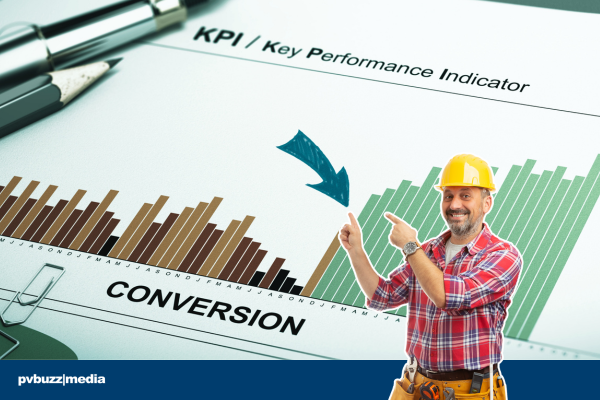- Many residential solar businesses mistakenly believe that having a website is enough to generate leads, but without a strategic digital marketing approach, their online presence remains ineffective.
- Success in lead generation relies on understanding consumer psychology, leveraging data-driven insights, and integrating multi-channel engagement to attract, nurture, and convert potential customers.
- Businesses that fail to optimize for visibility, engagement, and conversion will struggle to compete in an increasingly saturated market.
The promise of digital transformation often lures businesses into a false sense of security. Many believe that launching a website or setting up a social media account is enough to establish an online presence.
However, as countless residential solar companies have discovered, digital tools alone do not translate into high-quality leads or sustainable growth. In an increasingly competitive market, where customer acquisition costs are rising and consumer behavior is shifting, businesses must do more than merely exist online—they must engage, persuade, and convert.
Illusion of Digital Presence

A website acts as a business’s storefront in the digital realm, but like a brick-and-mortar store in an obscure alley, visibility determines its success. Without a structured strategy to drive traffic and engage visitors, even the most well-designed website remains an untapped resource. Digital engagement is governed by a blend of behavioral economics, data analytics, and algorithmic logic. Search engines and social media platforms rely on intricate ranking mechanisms that prioritize relevance and authority. Companies that fail to optimize for these factors effectively render themselves invisible to potential customers.
The problem extends beyond visibility. Even if a website attracts visitors, engagement is not guaranteed. Studies on online behavior consistently show that users decide within seconds whether to stay on a webpage or leave. This phenomenon, known as the blink test, underscores the importance of strategic content placement, intuitive design, and compelling messaging. Without these elements, businesses may generate traffic but fail to convert visitors into leads.
Science of Digital Influence
Consumer psychology plays a crucial role in digital marketing. The concept of social proof, first introduced by psychologist Robert Cialdini, explains why testimonials, reviews, and case studies influence decision-making. Potential customers seek validation before committing to a purchase, particularly in industries like solar energy, where initial costs are high, and long-term benefits must be weighed against uncertainties. Companies that fail to leverage social proof effectively miss a key opportunity to build trust.
Furthermore, the mere exposure effect, a well-documented psychological principle, suggests that people are more likely to trust and engage with brands they encounter repeatedly. This principle underpins the necessity of multi-touch marketing, where potential customers are engaged through various digital channels—search engines, social media, email, and retargeted advertisements—over time. Businesses that rely solely on organic traffic or sporadic advertising fail to create the repeated interactions needed to nurture leads into conversions.
Another critical element is reciprocity, a cognitive bias where individuals feel compelled to return favors. Offering valuable content—such as educational blogs, free consultations, or informative videos—creates a psychological incentive for potential customers to reciprocate by engaging with a business. This explains why companies that invest in content marketing often outperform those relying solely on direct sales tactics.
Data-Driven Marketing Matters

The fundamental advantage of digital marketing lies in its measurability. Unlike traditional advertising, which often relies on broad demographic assumptions, digital campaigns allow for real-time tracking and optimization. Behavioral analytics provide insights into how users interact with content, what captures their interest, and where they drop off in the conversion funnel. Businesses that actively analyze and adjust their digital strategies based on this data consistently achieve higher conversion rates.
However, data alone is meaningless without predictive analytics—the ability to anticipate customer behavior based on historical patterns. Algorithms trained on large datasets can determine the likelihood of a potential customer making a purchase, allowing businesses to refine their outreach efforts. The most successful companies use machine learning models to personalize marketing messages, ensuring that leads receive content tailored to their specific interests and decision-making stage.
Risk of Fragmented Digital Efforts
Many residential solar companies fall into the trap of digital fragmentation—adopting isolated tools without integrating them into a cohesive strategy. Running occasional Google Ads, posting sporadically on social media, or sending out generic email campaigns creates disjointed customer experiences. In contrast, companies that synchronize their digital efforts—aligning their website, advertising, content, and analytics—develop a seamless journey that guides potential customers from awareness to conversion.
A key example is customer journey mapping, a technique used to understand how individuals move through the decision-making process. By recognizing pain points and optimizing touchpoints, businesses can eliminate friction and improve lead generation.
For instance, a website form that asks for too much information may deter prospects, whereas an incremental lead nurturing process—offering a free solar assessment in exchange for an email—encourages engagement without overwhelming the user.
Summing It Up!
A website is a starting point, not a strategy. In the residential solar industry, where competition is fierce and consumer trust is paramount, businesses must go beyond passive online presence and adopt a scientifically driven digital strategy. The companies that thrive are those that integrate behavioral psychology, predictive analytics, and multi-channel engagement to attract, persuade, and convert leads effectively. Digital success is not a matter of having the right tools—it is about using them with precision and intent.












Comments